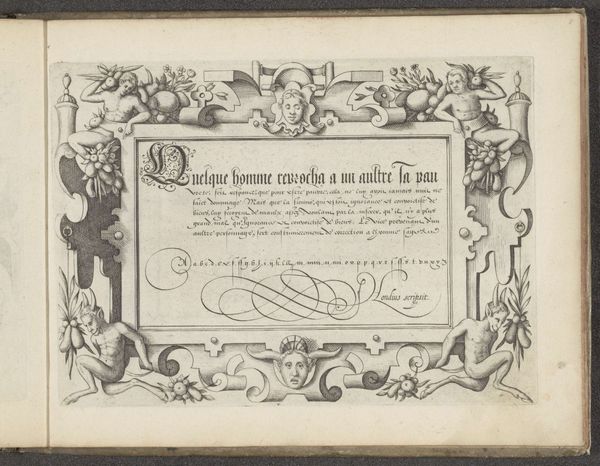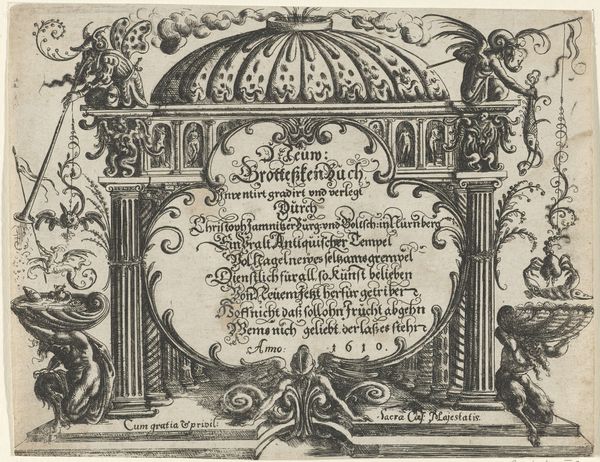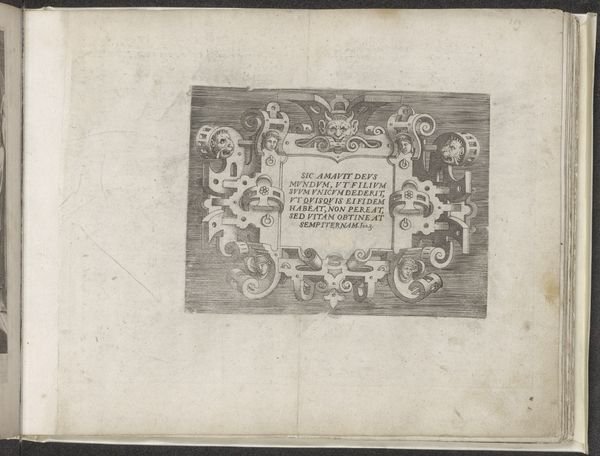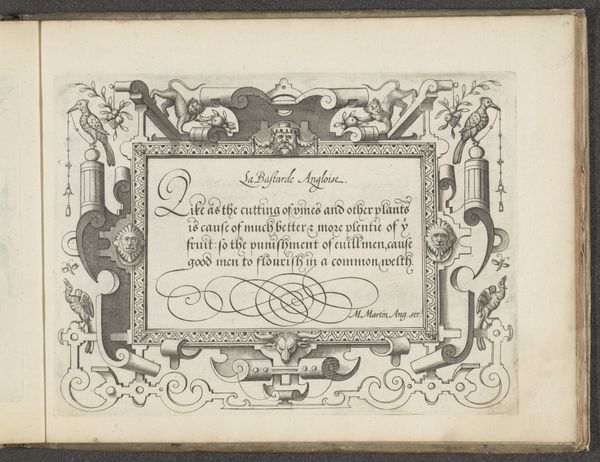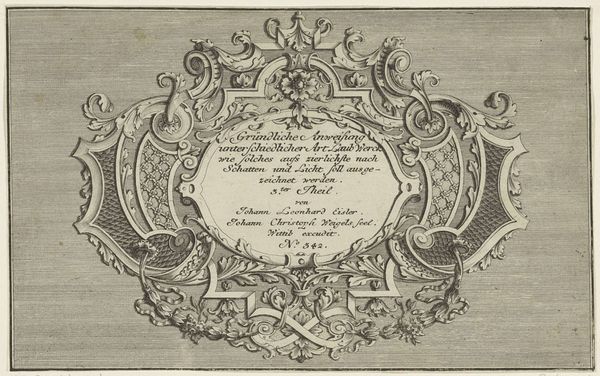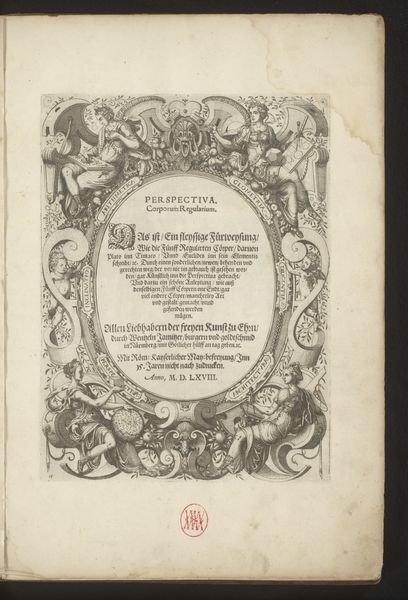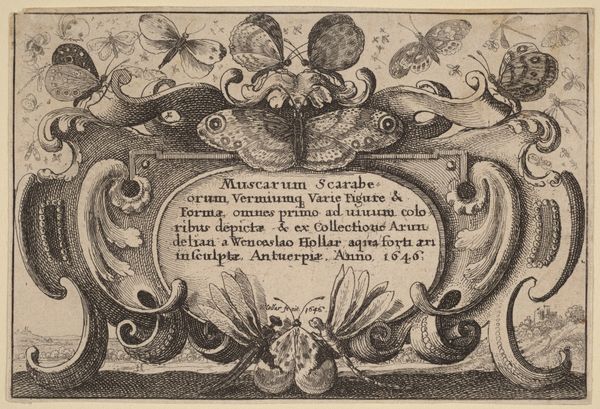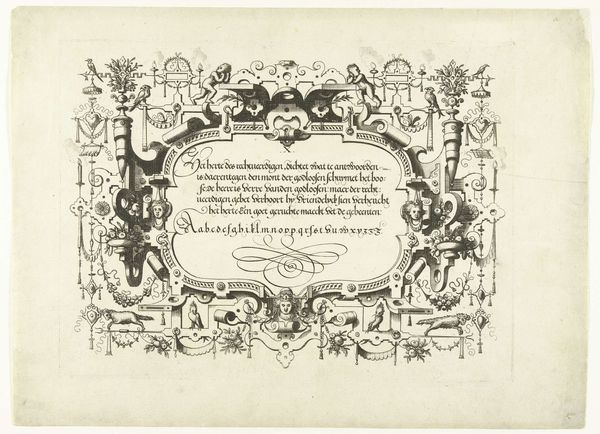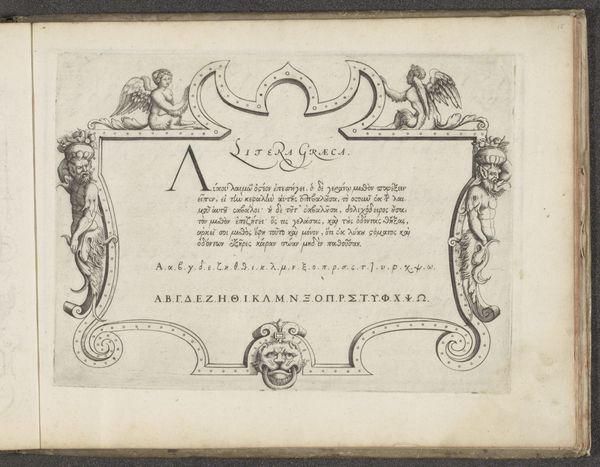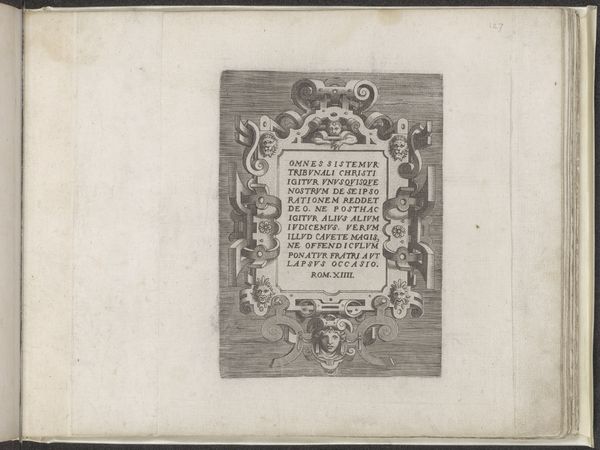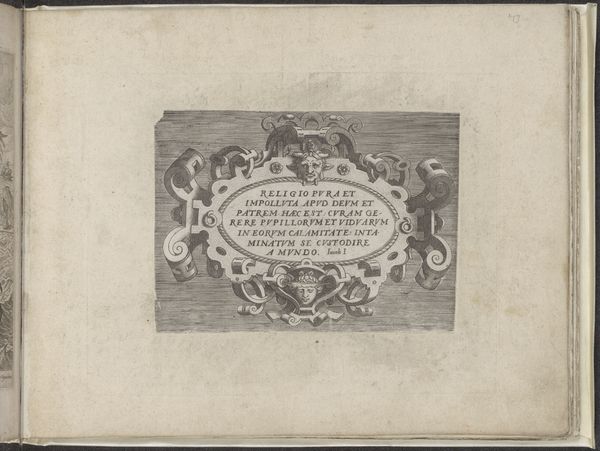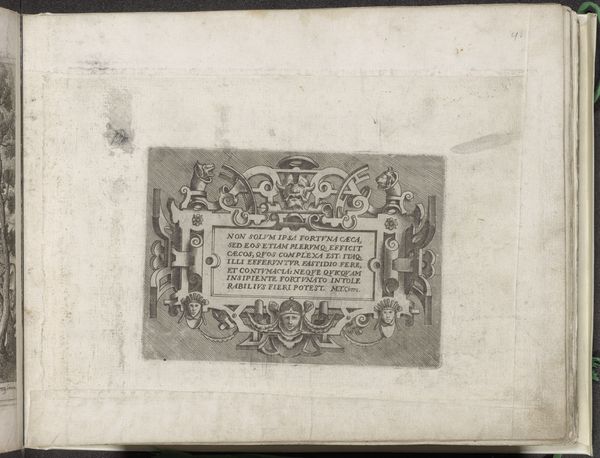
Newes Modelbuch in Kupffer (second title page, 2r) 1604
0:00
0:00
drawing, ornament, print, engraving
#
drawing
#
ornament
#
baroque
# print
#
11_renaissance
#
geometric
#
engraving
#
calligraphy
Dimensions: Overall: 5 11/16 x 7 1/16 x 3/4 in. (14.5 x 18 x 1.9 cm)
Copyright: Public Domain
Editor: This is the second title page of “Newes Modelbuch in Kupffer” from 1604, by Johann Sibmacher, an engraving printed in Nuremberg. I'm struck by the cherubic figures flanking what looks like ornate calligraphy – it feels both religious and secular at once. What do you see in this piece, particularly in the context of its time? Curator: I see a carefully constructed piece of propaganda aimed at the rising merchant class in Northern Europe. We tend to view ornamentation as purely aesthetic, but books like these provided crucial social capital during a period of immense political and religious upheaval. Who had access to these models, and who was excluded? How did these symbols reinforce existing power structures, or challenge them? Editor: So the beautiful borders and calligraphy served a deeper purpose? It feels like these details are saying more than meets the eye. Curator: Exactly! Sibmacher wasn’t simply providing patterns; he was shaping a visual language. The cherubs, the fruit, the complex geometric shapes—all of it communicated status, taste, and a connection to both classical and Christian traditions. What does it mean that it was made available “in Kupffer” or copperplate? What effect did it have to print “in Kupfer” given its cost and scarcity? Editor: I hadn’t considered it in terms of the social and political messages being sent through the form itself. Curator: Thinking about who possessed such knowledge helps us move past the idea of decoration as mere “fluff”. By dissecting what is deemed valuable we are in a better position to create meaningful and transformative change. What could images like this mean for art and artisans living today? Editor: I think I have a better understanding of what these Modelbuchs represented—they weren’t just pattern books, but statements of identity and aspiration, using the language of ornamentation. Curator: And hopefully, thinking critically about this example equips us to better assess the visual codes at play in our own lives.
Comments
No comments
Be the first to comment and join the conversation on the ultimate creative platform.
